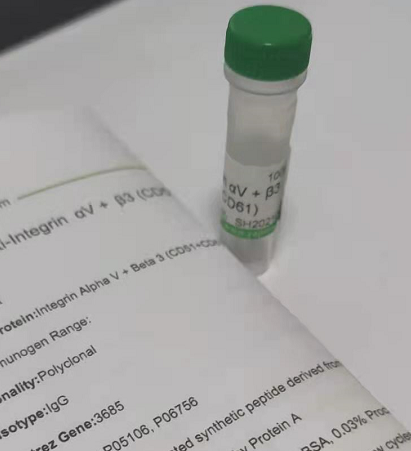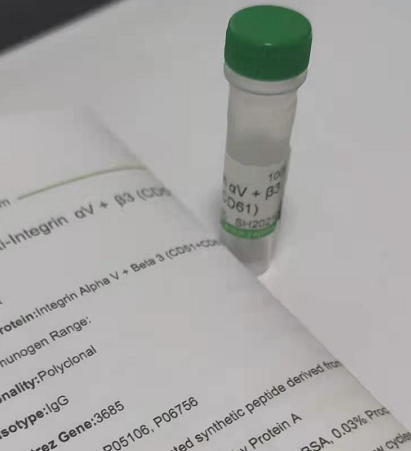| 產(chǎn)品編號 | Ys-21384R |
| 英文名稱 | NAV1.7 |
| 中文名稱 | 電壓開啟的鈉離子通道SCN9A抗體 |
| 別 名 | SCN9A; Sodium channel protein type 9 subunit alpha; ETHA; hNE Na; hNENa; NE NA; NENA; NE-NA; Neuroendocrine sodium channel; Peripheral sodium channel 1; PN1; SCN9A; Sodium channel protein type 9 subunit alpha; Sodium channel protein type IX subunit alpha; Sodium channel voltage gated type IX alpha; Sodium channel voltage gated type IX alpha polypeptide; Sodium channel voltage gated type IX alpha subunit; Voltage gated sodium channel alpha subunit Nav1.7; Voltage gated sodium channel subunit alpha Nav1; FEB3B; SCN9A_HUMAN. |
| 研究領(lǐng)域 | 通道蛋白 |
| 抗體來源 | Rabbit |
| 克隆類型 | Polyclonal |
| 交叉反應(yīng) | Rat, (predicted: Human, Mouse, Pig, Cow, Rabbit, Sheep, ) |
| 產(chǎn)品應(yīng)用 | WB=1:500-2000 IHC-P=1:100-500 IHC-F=1:100-500 ICC=1:100-500 IF=1:100-500 (石蠟切片需做抗原修復(fù)) not yet tested in other applications. optimal dilutions/concentrations should be determined by the end user. |
| 理論分子量 | 219kDa |
| 細(xì)胞定位 | 細(xì)胞膜 |
| 性 狀 | Liquid |
| 濃 度 | 1mg/ml |
| 免 疫 原 | KLH conjugated synthetic peptide derived from human NAV1.7: 1861-1960/1988 |
| 亞 型 | IgG |
| 純化方法 | affinity purified by Protein A |
| 緩 沖 液 | 0.01M TBS(pH7.4) with 1% BSA, 0.03% Proclin300 and 50% Glycerol. |
| 保存條件 | Shipped at 4℃. Store at -20 °C for one year. Avoid repeated freeze/thaw cycles. |
| 注意事項 | This product as supplied is intended for research use only, not for use in human, therapeutic or diagnostic applications. |
| PubMed | PubMed |
| 產(chǎn)品介紹 | This gene encodes a voltage-gated sodium channel which plays a significant role in nociception signaling. Mutations in this gene have been associated with primary erythermalgia, channelopathy-associated insensitivity to pain, and paroxysmal extreme pain disorder. [provided by RefSeq, Aug 2009] Function: Mediates the voltage-dependent sodium ion permeability of excitable membranes. Assuming opened or closed conformations in response to the voltage difference across the membrane, the protein forms a sodium-selective channel through which Na(+) ions may pass in accordance with their electrochemical gradient. It is a tetrodotoxin-sensitive Na(+) channel isoform. Plays a role in pain mechanisms, especially in the development of inflammatory pain. Subunit: The sodium channel consists of a large polypeptide and 2-3 smaller ones. This sequence represents a large polypeptide. Interacts with NEDD4 and NEDD4L. Subcellular Location: Membrane; Multi-pass membrane protein. Note=In neurite terminals. Tissue Specificity: Expressed strongly in dorsal root ganglion, with only minor levels elsewhere in the body, smooth muscle cells, MTC cell line and C-cell carcinoma. Isoform 1 is expressed preferentially in the central and peripheral nervous system. Isoform 2 is expressed preferentially in the dorsal root ganglion. Post-translational modifications: Ubiquitinated by NEDD4L; which may promote its endocytosis. Does not seem to be ubiquitinated by NEDD4. DISEASE: Defects in SCN9A are the cause of primary erythermalgia (PERYTHM) [MIM:133020]. It is an autosomal dominant disease characterized by recurrent episodes of severe pain associated with redness and warmth in the feet or hands. Defects in SCN9A are the cause of congenital indifference to pain autosomal recessive (CIPAR) [MIM:243000]; also known as channelopathy-associated insensitivity to pain. A disorder characterized by congenital inability to perceive any form of pain, in any part of the body. All other sensory modalities are preserved and the peripheral and central nervous systems are apparently intact. Patients perceive the sensations of touch, warm and cold temperature, proprioception, tickle and pressure, but not painful stimuli. There is no evidence of a motor or sensory neuropathy, either axonal or demyelinating. Defects in SCN9A are a cause of paroxysmal extreme pain disorder (PEPD) [MIM:167400]; previously known as familial rectal pain (FRP). PEPD is an autosomal dominant paroxysmal disorder of pain and autonomic dysfunction. The distinctive features are paroxysmal episodes of burning pain in the rectal, ocular, and mandibular areas accompanied by autonomic manifestations such as skin flushing. Defects in SCN9A are a cause of generalized epilepsy with febrile seizures plus type 7 (GEFS+7) [MIM:613863]. GEFS+7 is a rare autosomal dominant, familial condition with incomplete penetrance and large intrafamilial variability. Patients display febrile seizures persisting sometimes beyond the age of 6 years and/or a variety of afebrile seizure types. This disease combines febrile seizures, generalized seizures often precipitated by fever at age 6 years or more, and partial seizures, with a variable degree of severity. Defects in SCN9A are the cause of familial febrile convulsions type 3B (FEB3B) [MIM:613863]. FEB3B consists of seizures associated with febrile episodes in childhood without any evidence of intracranial infection or defined pathologic or traumatic cause. It is a common condition, affecting 2-5% of children aged 3 months to 5 years. The majority are simple febrile seizures (generally defined as generalized onset, single seizures with a duration of less than 30 minutes). Complex febrile seizures are characterized by focal onset, duration greater than 30 minutes, and/or more than one seizure in a 24 hour period. The likelihood of developing epilepsy following simple febrile seizures is low. Complex febrile seizures are associated with a moderately increased incidence of epilepsy. Similarity: Belongs to the sodium channel (TC 1.A.1.10) family. |
我要詢價
*聯(lián)系方式:
(可以是QQ、MSN、電子郵箱、電話等,您的聯(lián)系方式不會被公開)
*內(nèi)容:









